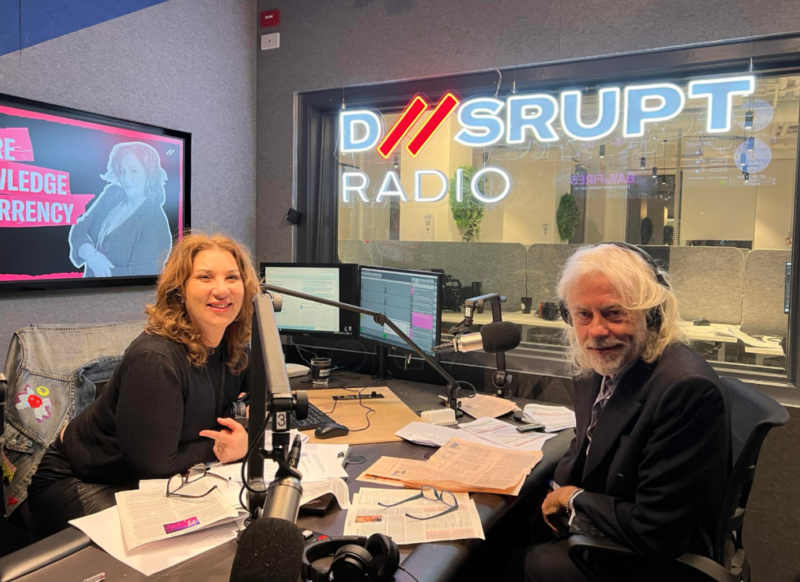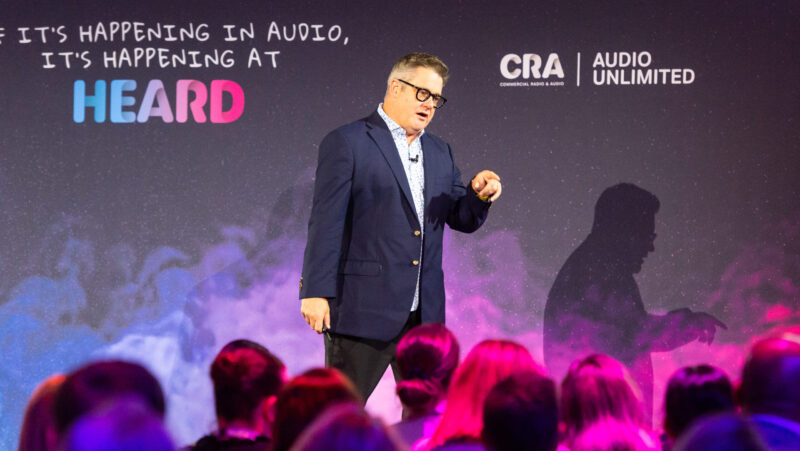
Why launch a radio station in 2024?
I asked the above question to Jo Stanley recently, upon hearing the news that she had done just that: launching Broad Radio, a new radio station some four years in the making.
Stanley has decades of radio under her belt, moving from Triple M to Fox FM to GOLD to a nationally syndicated show on SCA’s Hit Network. In 2020, she launched an internet radio show: a single weekly hour which has since grown into a stable of podcasts, a successful funding round and now, Broad Radio – a 24/7 radio station.
The station will start by building around a few flagship shows: a weekday Breakfast show, Morning Broads, featuring Stanley, Marieke Hardy and Michala Banas; a Friday Drive show hosted by triple j pioneer Tracee Hutchison; and a weekly show from Leila Gurruwiwi sharing First Nations Women’s stories.
Hutchison will also work as Broad Radio’s music director; this itself gives the station a major leg-up and means we will thankfully be spared a double dose of Ed Sheeran to drive home your work-week.
But, why launch a radio station in 2024?
“It came out of a need and an opportunity,” Stanley said.
“I had this, just, visceral experience, myself, of wanting and needing a radio space that reflected my life stage at that time. You know, a space for conversations that are about the challenging and joyous both at the same time, and those turbulent years of your midlife onwards.
“So I felt that wasn’t around, but I knew that women seek those sorts of spaces.”
There are 5 million women over 35 in Australia, Stanley explained. “I thought, ‘Okay, so there’s a need there’”
Stanley realised that need was best met through “the transformative power of radio”.
“Because I’ve seen it,” she reasons. “I’ve seen the way radio can shift a person’s day, can really uplift and elevate you as a person. And I was like, yeah, there’s a real opportunity for me to have that impact with something like Broad Radio.”
Radio is a notoriously tough nut to crack.
Last month, start-up Disrupt Radio sputtered to a stop – or rather, “a holding pattern” – with staffers left unpaid and the station removed from the DAB+ signal after a proposed investment fell through.
The radio station launched a little over a year ago with Bob Geldof as a breakfast host, and the likes of Libbi Gorr and Jules Lund on the airwaves. In July, crowd funding attempts raised just $24,500 of a $1 million target. Now, there’s radio silence.
“Disrupt was due to have a significant investment in early August,” founder Benjamin Roberts told The Australian. “That didn’t happen, due to circumstances outside of our control, and so we were forced to move a lot of things around, which included live on-air programming, payment cycles for staff in mid-August, and responding to changes in broadcast distribution and live content.”
Roberts had told the paper in late July: “We are definitely not making profit but we don’t expect to at this point”, adding that “anybody that has launched a new radio station before knows that some of them go for five years without making money, so it’s all about getting the product right first.”
The last ratings book saw Disrupt drawing a DAB+ audience of 4,000 listeners in Sydney, with 1,000 in Melbourne – and even less in Brisbane.
So, radio is hard. It’s expensive, and the airwaves are clogged. Stanley must have known all this going in. So, why not stick to the podcast network Broad Radio is also building?
“Podcasting is obviously going from strength to strength,” Stanley concedes. “And we see podcasting now, they take callers – because a lot of podcasts have a call line – so they’ll interact with callers, and they’re doing live events.
“All of the things that they’re doing, essentially, is trying to emulate what radio does, which is that immediate conversation, the talkback, the reflection of what’s happening in that time, in that city, in that moment.”
This is the crux of why launching a radio station in 2024 is a great idea.
Podcasts aren’t radio, as much as technology is allowing the medium to steadily move closer to a neat facsimile of radio. Plus, the radio airwaves may be crowded, but these days, there are more podcasts than people.
Australia, in particular, has a number of successful female-led and focused podcast networks.
There’s Mamamia’s 63-show network – which just announced its Hot Pod Summer, where the network will double down on new podcast content over summer during the traditional non-ratings period. There’s Shameless, which has remained independently-owned and operated and competes with Hamish & Andy and Casefile for listeners. It was just shy of a million monthly downloads in August. There’s also BlakCast, an Aboriginal owned and ran podcast network, launched in partnership with ARN’s iHeart, the brainchild of radio royalty Mandanara Bayles.
Stanley is targeting women over 35, which is a lucrative advertising demographic.
At CRA’s HEARD 2024 conference in February, Amanda Keller – who co-hosts WS-FM’s breakfast show Jonesy and Amanda — said her “golden oldies” station can often “fall through some of the cracks” when it comes to advertisers. This, she said, is a grave mistake.
“People look at the demographic and think they know who we are,” she said. “I would suggest having a listen, because there’s a lot of money in our demographic.”
There’s also still a lot of money in radio.
A recent PwC report shows a 23.6% yearly leap in podcast and streaming audio advertising expenditure, with spend now in excess of $290 million.
This is split between $185 million for streaming radio, and $105 million for podcasts. During the June quarter, metro radio saw a 2.6% increase in total ad revenue, to $200.7 million for the three-month period.
Comparatively, during the first half of 2024, free-to-air advertising revenue was $1.5 billion, down 7%.
There’s still plenty more to be made, too.
Earlier this year, Professor Mark Ritson teamed with marketing effectiveness expert Rob Brittain to analyse the Advertising Council of Australia’s Effectiveness Database, and found that marketers who allocate just over a tenth of their total advertising campaign budget to radio will double the entire campaign’s effectiveness.
These findings were commissioned by Commercial Radio & Audio (CRA) and pulled from a pool of Effie-nominated (i.e. successful) campaigns, so radio ads aren’t the magic bullet such a paltry spend suggests. But with this research – and Ritson touting it loudly – CRA are hoping more marketers are waking up to the subconscious nature of radio advertising.
The inherent problem is that radio’s subconscious nature works against it. Ritson called this “a real bundle of complexity” when speaking to me earlier this year.
“Radio makes other media look good — and, as a result, no-one realises radio works as a medium,” he said.
“That’s the crux of my argument: a small amount of radio really makes everything else work better. But, as a result, no one in the industry knows that, because they look at a piece of digital video sponsorship [mocks being impressed] you know?
“Radio is kind of comfortable with that. They’re not a big-booted operation. And, I think that that was the whole crux of my original interest in doing this. I have this hypothesis — I’ve said it for years to clients — radio is a great sidekick.”
But radio can be the main character, too.
After all, as Stanley pointed out, the current superstar — the podcast — is trying to get back to what radio once was. And still is. So, why not tune into the radio this weekend?
Broad Radio is currently streaming live. And before you ask – I’m a man, and I managed to tune in just fine.
Enjoy your weekend.





